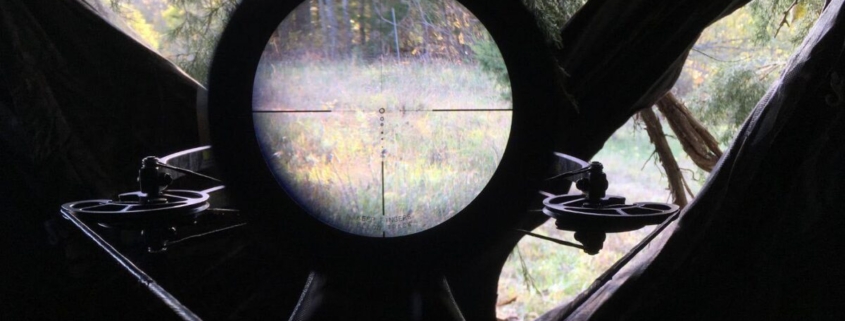Misguided Crossbow Marketing? | Grand View Outdoors
I’ve recently seen these crossbow advertising statements:
- Rifle-like accuracy built into every product, every time.
- Astounding long-range capability with its adjustable turret scope.
- The reverse-draw XXX shoots 515 fps.
- The tripod’s clamp-on design allows for use with both crossbows and firearms.
When states began making crossbows legal during archery-only seasons, their inherent technology made them relatively short-range tools, with shots limited to 50 yards or so. This was at a time when only the best archers using the best compound bows could make a 50-yard shot, too. That all changed back in 2017, when Mission Crossbows — owned by archery legend and design genius Matt McPherson and his Mathews Archery — pushed the technology envelope and created a crossbow called the SUB-1, touting sub-1-inch group accuracy at 100 yards.
Today, multiple crossbow manufacturers tout their product’s ability to produce this kind of accuracy with hunting-weight arrows flying at 450-500 fps or more, and equip their crossbows with variable-power scopes and triggers that break as crisply as those on the best precision rifles. When coupled with a laser rangefinder, these modern crossbows make rifle-like accuracy at 100 yards a reality.
So I have to ask: Are crossbow manufacturers shooting themselves in the foot when they promote crossbows as long-range capable?
Since I began seriously bowhunting back in the late 1970s, long-range bow shots at game have been frowned upon, for good reason. Without diving too deep into the weeds, it takes a 400-grain hunting-weight arrow leaving a bow of any kind at 350 fps about 1 second to travel 100 yards. That’s plenty of time for an animal to move, resulting in either a miss or, worse, a wounding hit. Also, that same arrow will drift off course several feet with a crosswind of just 5 mph. Throw in the adrenaline rush all hunters feel during the moment of truth, and it’s easy to see why the variables involved make taking these long-range shots unwise.
An Old Debate?
I’ve had the discussion with industry professionals who compare the crossbow/compound bow debate to the same argument made decades ago by traditional archers when compound bows first came out. Traditional bowhunters, who shot their deer inside 20 yards, said that the compound made killing a deer “too easy” and you could shoot them “too far away.” This was back when the maximum range for a skilled compound shooter was maybe 40 yards. But the difference between 20 and 40 yards is not the same as the difference between 40 and 100 yards, by any stretch of the imagination.
The debate about whether crossbows should be allowed during archery-only seasons has largely been settled, with crossbows legal during archery-only seasons in 32 states. Most of the states with restrictions are in the West, and only Oregon bans crossbow hunting completely.
The crossbow is increasingly becoming the preferred choice of the whitetail bowhunter. In states where there are no restrictions, if you ask an archery pro shop that sells both compounds and crossbows where the sales are these days, many, if not most, will tell you crossbows.
The difference is this: In this high-tech modern world, where people are used to finding anything and everything immediately with a click of a mouse or a tap of their phone, instantaneous success has become almost expected. To become a consistently accurate shooter with a compound bow takes regular practice over months, not days, and an intimate knowledge of the equipment so you can tweak those inevitable “gotchas” that plague compounds.
Conversely, you can pull a modern crossbow out of the box that’s been pre-sighted in at the factory and, if you have any experience with rifle shooting at all, hit the X ring at extended ranges immediately. Every time. That’s one of the reasons they have become so popular, and a big reason why crossbow use has been touted as a way to increase hunter participation, which all states acknowledge is a challenge for them.
To date, there’s no data showing that the use of modern crossbows have increased overall big game harvest, nor that buck age class has been affected.
That said, will their evolution follow that of modern muzzleloaders, which when matched with a riflescope and sabot-encased conical bullets, are accurate to at least 250 yards? Fact: There has been a subsequent reduction in special muzzleloader-only seasons and equipment restrictions such as no sabots, no pelletized powder, and no scopes.
Some manufacturers tell you their crossbows are accurate to 100+ yards, that they are “built like long-range precision rifles,” but you should never shoot at game further than 60 yards (it used to be 40, then 50 yards), isn’t that some sort of Orwellian Doublespeak?
Hunting is an individual thing in which you really have to please only one person — yourself. If you want to hunt with a long-range capable crossbow and it’s legal, I’m all for it.
For me, though, bowhunting is all about getting in their face, and when I do, having to cautiously draw the bow, hold the string with my own muscle power, and make the shot when the window of opportunity opens.
Source link












